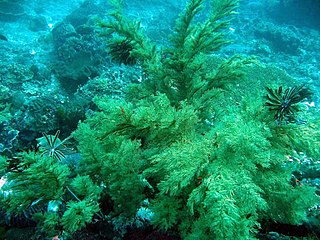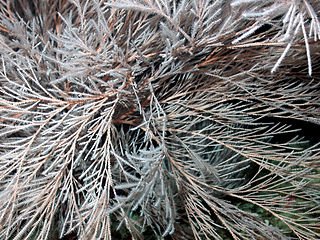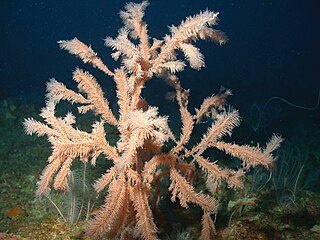| Schizopathidae | |
|---|---|
 | |
| Scientific classification | |
| Domain: | Eukaryota |
| Kingdom: | Animalia |
| Phylum: | Cnidaria |
| Class: | Hexacorallia |
| Order: | Antipatharia |
| Family: | Schizopathidae |
Schizopathidae is a family of corals belonging to the order Antipatharia. [1]
| Schizopathidae | |
|---|---|
 | |
| Scientific classification | |
| Domain: | Eukaryota |
| Kingdom: | Animalia |
| Phylum: | Cnidaria |
| Class: | Hexacorallia |
| Order: | Antipatharia |
| Family: | Schizopathidae |
Schizopathidae is a family of corals belonging to the order Antipatharia. [1]
Genera: [1]

16P/Brooks, also known as Brooks 2, is a periodic comet discovered by William Robert Brooks on July 7, 1889, but failed to note any motion. He was able to confirm the discovery the next morning, having seen that the comet had moved north. On August 1, 1889, the famous comet hunter Edward Emerson Barnard discovered two fragments of the comet labeled "B" and "C" located 1 and 4.5 arc minutes away. On August 2, he found another four or five, but these were no longer visible the next day. On August 4, he observed two more objects, labeled "D" and "E". "E" disappeared by the next night and "D" was gone by the next week. Around mid-month, "B" grew large and faint, finally disappearing at the beginning of September. "C" managed to survive until mid-November 1889. The apparition ended on January 13, 1891. After the discovery apparition, the comet has always been over two magnitudes fainter.

Antipatharians, also known as black corals or thorn corals, are an order of soft deep-water corals. These corals can be recognized by their jet-black or dark brown chitin skeletons, which are surrounded by their colored polyps. Antipatharians are a cosmopolitan order, existing in nearly every oceanic location and depth, with the sole exception of brackish waters. However, they are most frequently found on continental slopes under 50 m (164 ft) deep. A black coral reproduces both sexually and asexually throughout its lifetime. Many black corals provide housing, shelter, food, and protection for other animals.
Rebekah Mary Brooks is a British media executive and former journalist and newspaper editor. She has been chief executive officer of News UK since 2015. She was previously CEO of News International from 2009 to 2011 and was the youngest editor of a British national newspaper at News of the World, from 2000 to 2003, and the first female editor of The Sun, from 2003 to 2009. Brooks married actor Ross Kemp in 2002. They divorced in 2009 and she married former racehorse trainer and author Charlie Brooks.
Alcyonacea are a species of sessile colonial cnidarians that are found throughout the oceans of the world, especially in the deep sea, polar waters, tropics and subtropics. Whilst not in a strict taxonomic sense, Alcyonacea are commonly known as "soft corals" (Octocorallia) that are quite different from "true" corals (Scleractinia). The term “soft coral” generally applies to organisms in the two orders Pennatulacea and Alcyonacea with their polyps embedded within a fleshy mass of coenenchymal tissue. Consequently, the term “gorgonian coral” is commonly handed to multiple species in the order Alcyonacea that produce a mineralized skeletal axis composed of calcite and the proteinaceous material gorgonin only and corresponds to only one of several families within the formally accepted taxon Gorgoniidae (Scleractinia). These can be found in order Malacalcyonacea (taxonomic synonyms of include : Alcyoniina, Holaxonia, Protoalcyonaria, Scleraxonia, and Stolonifera. They are sessile colonial cnidarians that are found throughout the oceans of the world, especially in the deep sea, polar waters, tropics and subtropics. Common names for subsets of this order are sea fans and sea whips; others are similar to the sea pens of related order Pennatulacea. Individual tiny polyps form colonies that are normally erect, flattened, branching, and reminiscent of a fan. Others may be whiplike, bushy, or even encrusting. A colony can be several feet high and across, but only a few inches thick. They may be brightly coloured, often purple, red, or yellow. Photosynthetic gorgonians can be successfully kept in captive aquaria.

Hexacorallia is a class of Anthozoa comprising approximately 4,300 species of aquatic organisms formed of polyps, generally with 6-fold symmetry. It includes all of the stony corals, most of which are colonial and reef-forming, as well as all sea anemones, and zoanthids, arranged within five extant orders. The hexacorallia are distinguished from another class of Anthozoa, Octocorallia, in having six or fewer axes of symmetry in their body structure; the tentacles are simple and unbranched and normally number more than eight. These organisms are formed of individual soft polyps which in some species live in colonies and can secrete a calcite skeleton. As with all Cnidarians, these organisms have a complex life cycle including a motile planktonic phase and a later characteristic sessile phase. Hexacorallia also include the significant extinct order of rugose corals.

Salpingidae or narrow-waisted bark beetles is a family of beetles in the superfamily Tenebrionoidea. The species are small, about 1.5 – 7 mm in length. The family is globally distributed and consists of about 45 genera and 300 species, which are generally found in the temperate regions of both hemispheres. The family is mainly associated with plants as well as with ascomycete and hyphomycete fungi. Some members of the family are associated with unusual habitats, like Aegialites and Antarcticodomus, which are found in coastal areas including the intertidal zone, with former feeding on algae.

Antipathidae is a family of corals in the order Antipatharia, commonly known as black corals. They are generally considered a deep-water taxon; however, some of the most diverse communities are known from tropical shallow waters.

Antipathes is a genus of coral in the order Antipatharia, composed of black coral. Distinct features vary greatly within this genus: it contains symmetrically aligned as well as irregularly shaped corals, a range of different colors, and colonies that can be either sparsely branched or closely packed. polyps for these corals have six tentacles that are each lined with stinging cells. Unlike their reef-building cousins, these coral lack photosynthesizing algae and are not restricted to the lighter surface regions. They prefer to live in deeper waters near currents so they can catch and eat passing zooplankton.

Aphanipathes is a diverse genus of black corals in the family Aphanipathidae, typified by large polypar spines. However, there are some disagreement in the correct taxonomic classification of this genus. The Global Biodiversity Information Facility (GBIF) classifies Aphanipathes as being a genus of the family Aphanipathidae while the Integrated Taxonomic Information System (ITIS) classifies it as a genus of the family Antipathidae.

Leiopathes is a genus of hexacorallians belonging to the anthozoan clade Antipatharia. It is the only genus in the Leiopathidae family. The genus name means "smooth disease".

Antipathes dendrochristos, commonly known as Christmas tree coral, is a species of colonial coral in the order Antipatharia, the black corals, so named because their calcareous skeletons are black.
Cladopathidae is a family of cnidarians belonging to the order Antipatharia.
Myriopathidae is a family of cnidarians belonging to the order Antipatharia.
Stylopathidae is a family of corals belonging to the order Antipatharia.

Tanacetipathes is a genus of corals belonging to the family Myriopathidae.
Bathypathes is a genus of black coral in the family Schizopathidae.
Alternatipathes is a genus of corals belonging to the family Schizopathidae.
Alternipathes bipinnata is a species of coral belonging to the family Schizopathidae. It has been found off the Pacific coast of Mexico.